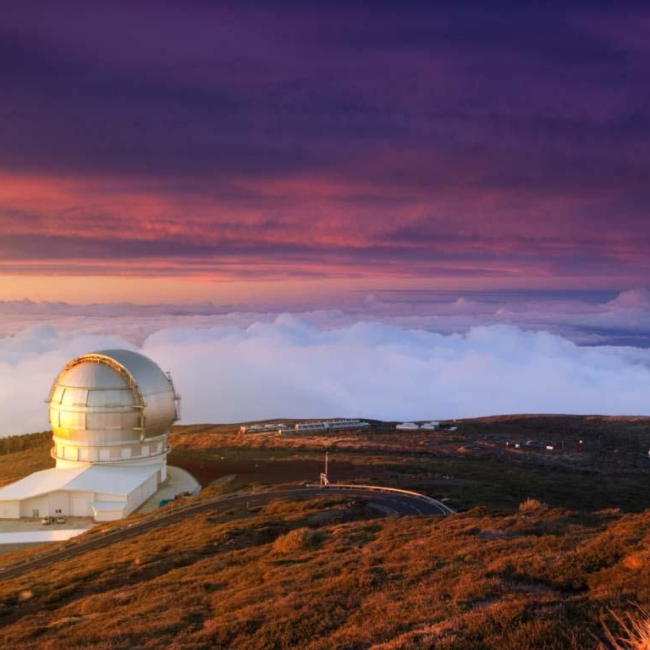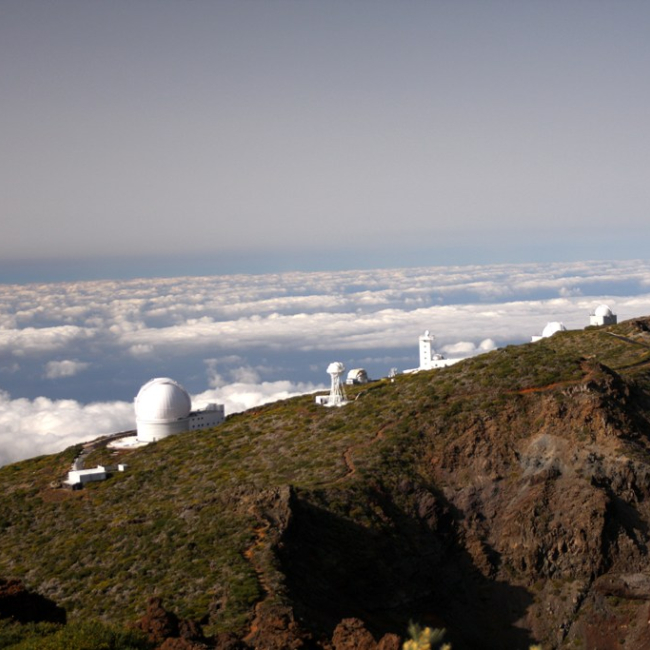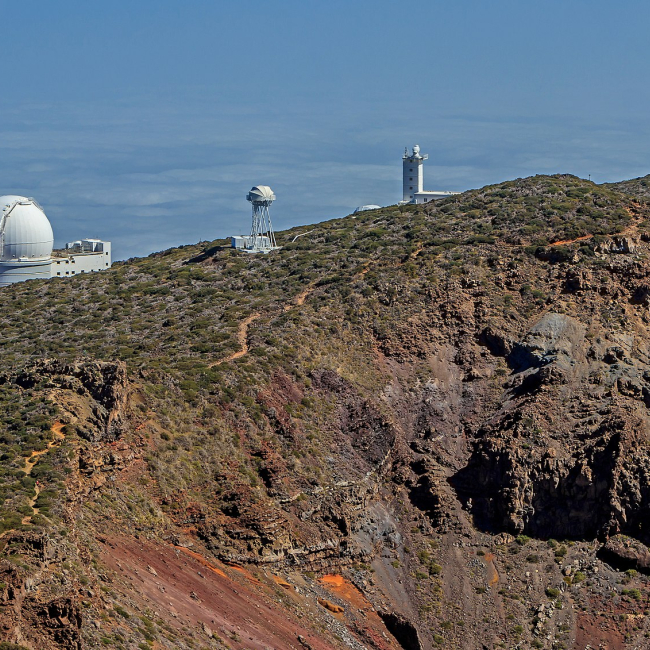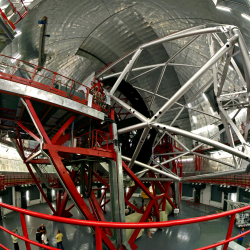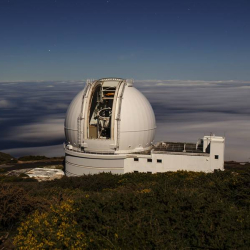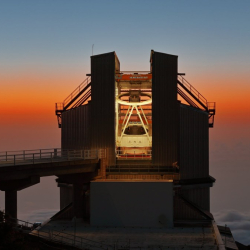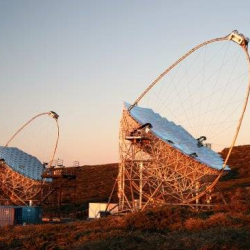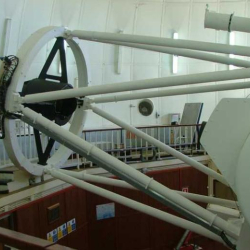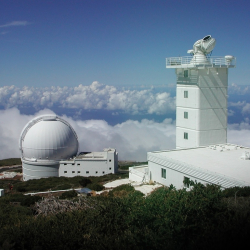Roque de los Muchachos Observatory
Sobre "Roque de los Muchachos Observatory"
Because of the sky above La Palma, this observatory enjoys exceptional conditions for astronomical research, for this reason, it continues to attract giant telescopes of the future, as well as the new generation of Cherenkov telescopes, designed to study the Universe in very high energy gamma rays.
The site currently hosts the largest optical-infrared telescope in the world, along with twenty other telescopes and instruments for various kinds of studies, including nocturnal observations, robotic observing, solar physics, and high energy astrophysics.
Great advances in the study of the Universe have been made with these telescopes, ranging from the detection of the most distant galaxy to confirmation of the existence of black holes and the accelerated expansion of the Universe.
Aside from its scientific activities, the Instituto de Astrofísica de Canarias carries out numerous outreach tasks in an effort to ensure that astronomical knowledge reaches the public at large. For this purpose, at various times of the year school and group visits are arranged to its observing facilities at Roque de los Muchachos Observatory and Teide Observatory.
The Roque de los Muchachos Observatory Residence has a number of facilities (diurnal and nocturnal dormitories, kitchen, dining room, reception, lounges, games, etc.) to fulfil the needs of all the scientific and technical staff link to the Observatory.


